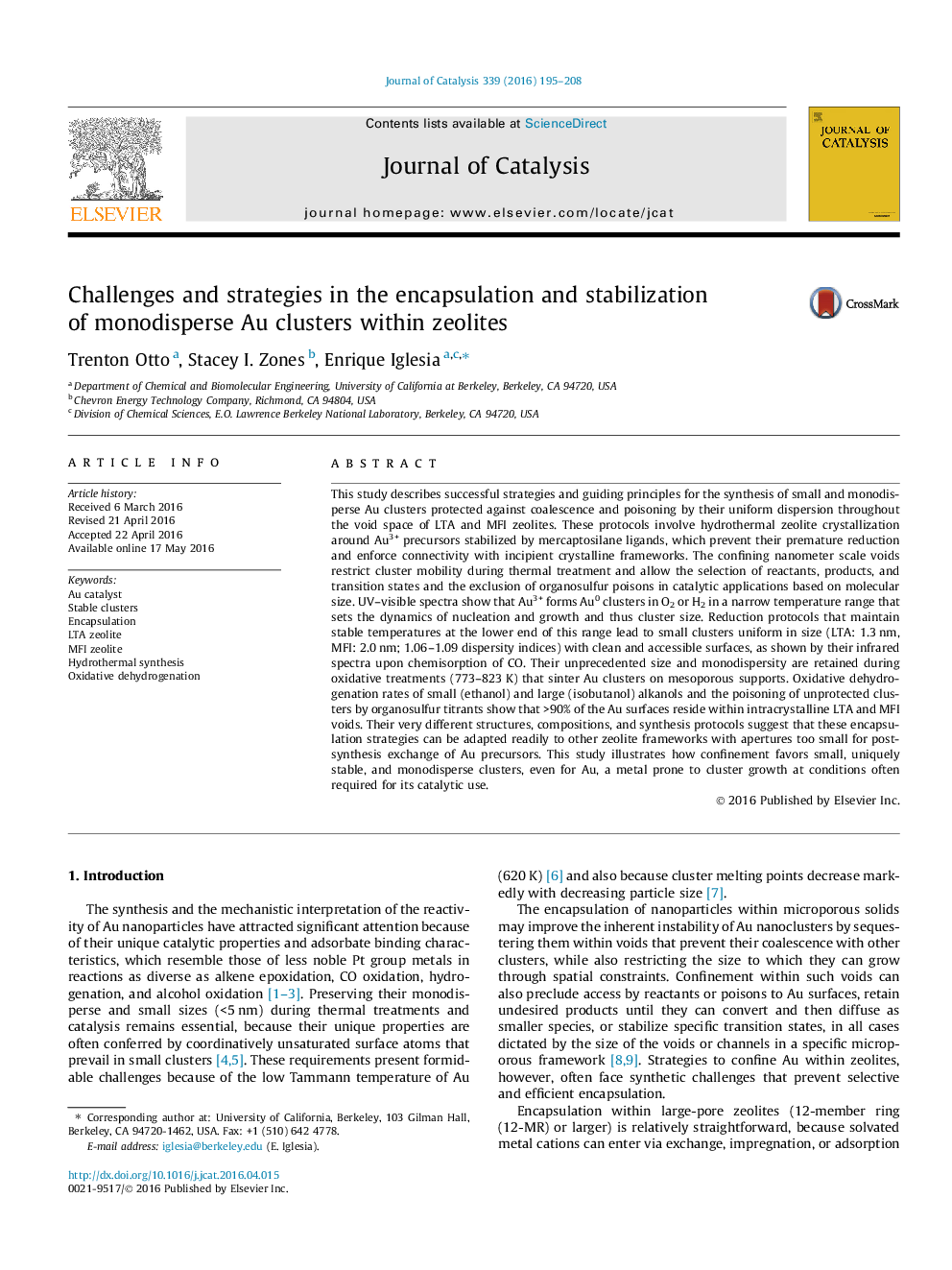| کد مقاله | کد نشریه | سال انتشار | مقاله انگلیسی | نسخه تمام متن |
|---|---|---|---|---|
| 60579 | 47537 | 2016 | 14 صفحه PDF | دانلود رایگان |

• A broadly applicable procedure to encapsulate Au clusters within zeolites.
• Nanometer-size monodisperse Au clusters thermally stable against sintering.
• Size-selective catalysis and resistance to sulfur poisoning through zeolite encapsulation.
This study describes successful strategies and guiding principles for the synthesis of small and monodisperse Au clusters protected against coalescence and poisoning by their uniform dispersion throughout the void space of LTA and MFI zeolites. These protocols involve hydrothermal zeolite crystallization around Au3+ precursors stabilized by mercaptosilane ligands, which prevent their premature reduction and enforce connectivity with incipient crystalline frameworks. The confining nanometer scale voids restrict cluster mobility during thermal treatment and allow the selection of reactants, products, and transition states and the exclusion of organosulfur poisons in catalytic applications based on molecular size. UV–visible spectra show that Au3+ forms Au0 clusters in O2 or H2 in a narrow temperature range that sets the dynamics of nucleation and growth and thus cluster size. Reduction protocols that maintain stable temperatures at the lower end of this range lead to small clusters uniform in size (LTA: 1.3 nm, MFI: 2.0 nm; 1.06–1.09 dispersity indices) with clean and accessible surfaces, as shown by their infrared spectra upon chemisorption of CO. Their unprecedented size and monodispersity are retained during oxidative treatments (773–823 K) that sinter Au clusters on mesoporous supports. Oxidative dehydrogenation rates of small (ethanol) and large (isobutanol) alkanols and the poisoning of unprotected clusters by organosulfur titrants show that >90% of the Au surfaces reside within intracrystalline LTA and MFI voids. Their very different structures, compositions, and synthesis protocols suggest that these encapsulation strategies can be adapted readily to other zeolite frameworks with apertures too small for post-synthesis exchange of Au precursors. This study illustrates how confinement favors small, uniquely stable, and monodisperse clusters, even for Au, a metal prone to cluster growth at conditions often required for its catalytic use.
Figure optionsDownload high-quality image (261 K)Download as PowerPoint slide
Journal: Journal of Catalysis - Volume 339, July 2016, Pages 195–208